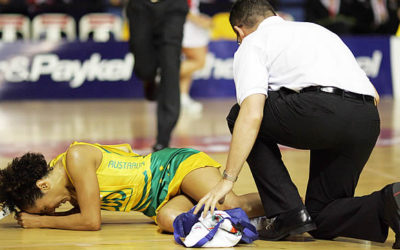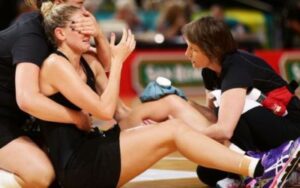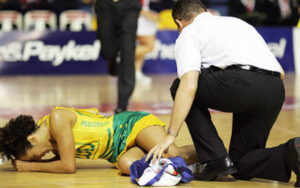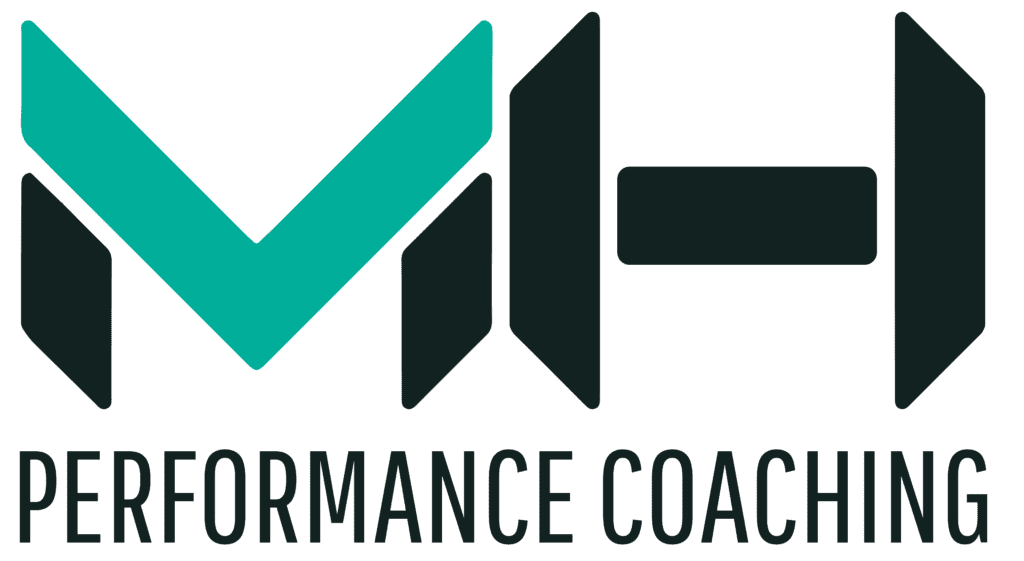With more than 400, 000 participants nationwide, netball is the number one sport chosen to play by Australian females (9). Due to the nature of the game, intensity and demands on the body are high. The most common areas of the body injured during netball are the ankle and knee, with the most reported damage occurring to the anterior cruciate ligament (ACL). There are a variety of factors including anatomical, neuromuscular, and hormonal that impact the young female netball athlete and predispose them to be prone to injury.
As part one of a three-part article, part 1 looks to assess the anatomical factors that cause female athletes, particularly young netballers, to be more prone to injury.
Anatomical factors refer to the structural abnormalities or imbalances that occur within the human skeletal system. Anatomical differences between males and females may predispose female athletes to a higher risk of injury. The following three factors related to anatomical differences indicate why females may be more prone to injury, in particular, a risk of damage to their ACL.
Table of Contents
ToggleQuadriceps (Q) Angle
The Q angle of the knee is the measurement of the angle between the quadriceps muscle and the kneecap. It provides vital information in regard to the alignment of the knees. Females have a greater Q-angle compared to males due to an increased pelvis width (1). An increased Q-angle may help explain the discrepancy between the prevalence of ACL injury between males and females (2). Having a greater Q angle means there is a greater tibial femoral rotational force (rotation of the knee towards the midline) (4) and increased knee valgus motion (motion of the knees coming together, commonly recognized as knocked knees) (3).
Having knees that are more likely to rotate inwards when jumping and landing is a very big risk factor for young female netballers sustaining an ACL injury.
Intercondylar Notch Width
The intercondylar notch is the grove between the two nobly ends (condyles) of your thigh bone (femur) closest to your knee. This grove is where your cruciate ligaments, such as the ACL attach. This notch can be rounded or triangular in some individuals (10). If the notch is smaller than 17 mm, there is a 6-fold increase in the risk of sustaining an ACL injury compared to athletes who have a notch greater than 17mm (5). The intercondylar notch of the femur in females is usually narrower in comparison to males (2, 5, 6). Research has shown that a smaller intercondylar notch significantly increases the incidence of an ACL tear. There are no differences in ACL injury rates between males and females due to notch width but more so to do with a smaller groove creating a weaker ACL, predisposing the knee to injury.
Females have a smaller intercondylar notch, meaning the ACL is more fragile, which may make female netball athletes more prone to ACL injury.
Joint Mobility
Compared to males, females have a higher prevalence of hypermobility syndrome, increased joint laxity, and hamstring flexibility (8). Having increased hamstring flexibility heightens the risk of placing the knee in hyperextension (excessively straightened) and performing valgus motion (knocked knees) predisposing female athletes to ACL injury (7). If the hamstrings are overly flexible, co-contraction of the quadriceps and hamstrings is delayed which results in higher forces being placed on the ACL during deceleration and landing (2, 8).
Hypermobility is very common in young female athletes (extreme flexibility at the joints). Being hypermobile has been shown to reduce joint proprioception (varying muscle contraction as an immediate response) and thus be seen as a risk factor for injury in female athletes.
Anatomical factors have a role in determining injury risk in young female netball athletes. These factors are unfortunately un-modifiable but important to keep in mind when learning how prone female netball athletes are to injury. Read parts 2 and 3 to find out more about the impact of hormonal and neuromuscular risk factors on injury in female netball athletes in addition to what factors can be modified to reduce injury risk.
References
1. Nguyen AD, Boling MC, Levine B, and Shultz SJ. Relationships Between Lower Extremity Alignment and the Quadriceps Angle. Clinical Journal of Sports Medicine19: 201-206, 2009.
2. Hewett TE, Myer GD, and Ford KR. Anterior cruciate ligament injuries in female athletes: Part 1, mechanisms and risk factors. The American Journal of Sports Medicine 34: 299-311, 2006.48.
3. Hewett TE, Myer GD, Ford KR, Heidt RS, Jr., Colosimo AJ, McLean SG, van den Bogert AJ, Paterno MV, and Succop P. Biomechanical measures of neuromuscular control and valgus loading of the knee predict anterior cruciate ligament injury risk in female athletes: a prospective study. The American Journal of Sports Medicine 33: 492-501, 2005.
4. Pantano KJ, White SC, Gilchrist LA, and Leddy J. Differences in peak knee valgus angles between individuals with high and low Q-angles during a single limb squat. Journal of Clinical Biomechanics 20: 966-972, 2005.
5. Lewis T. Anterior Cruciate Ligament Injury in Female Athletes: Why are women so vulnerable?: Literature review. Physiotherapy 86: 464-472, 2000.
6. Shelbourne KD, Davis TJ, and Klootwyk TE. The relationship between the intercondylar notch width of the femur and the incidence of anterior cruciate ligament tears. A prospective study. The American Journal of Sports Medicine 26: 402-408, 1998.
7. Yu B, Kirkendall DT, and Garrett Jr WE. Anterior cruciate ligament injuries in female athletes: anatomy, physiology, and motor control. Sports Medicine and Arthroscopy Review 10: 58-68, 2002.
8. Boden BP, Dean GS, Feagin JA, Jr., and Garrett WE, Jr. Mechanisms of anterior cruciate ligament injury. Orthopedics 23: 573-578, 2000.
9. Smith R, Damodaran AK, Swaminathan S, Campbell R, and Barnsley L. Hypermobility and sports injuries in junior netball players. British Journal of Sports Medicine 39: 628-631, 2005.
10. http://www.abs.gov.au/ausstats/abs@.nsf/Products/8F88DA9AC6E141AACA 257AD900 0E2666?opendocument.
11. http://www.drallenfanderson.com/knee/anatomy





